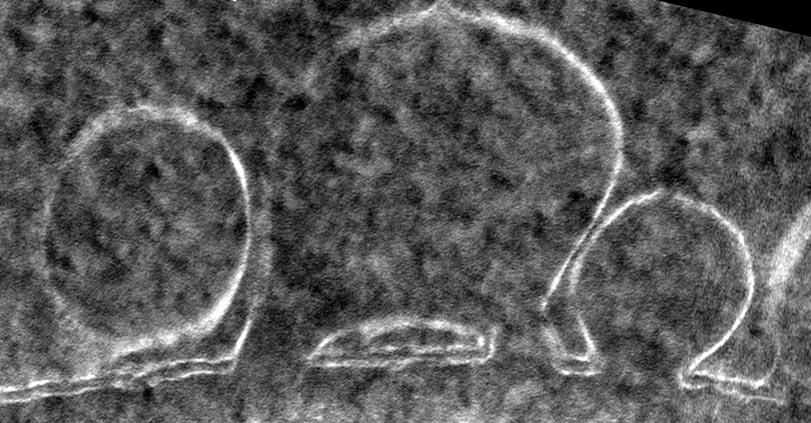
Fossil plant cytoplasm is a novel object of research in palaeobotany and attracts increasing attention of scientists around the world. Recently Molecular Membrane Biology, an academic journal published in England, released a paper on membrane fusion in a fossil plant authored by professor WANG Xin from Nanjing Institute of Geology and Palaeontology Chinese Academy of Sciences, LIU Wenzhe from Northwest University, and DU Kaihe from Nanjing Normal University. In the paper, the authors reveal the hard-to-catch snapshots of membrane fusion in plant cells.
Membrane fusion is a process related to many physiological activities in cells. Due to the transience of this process, scientists working on living organisms have been taking effort to capture and study it. It has been noticed that there is a central plug in the fusion pore, but there is little information on how it comes into being. In the traditional palaeontology, cytoplasm that is closely related to many physiological activities used to be taken as volatile and should have decayed in fossils completely, thus leaving physiology of fossil plants a mission impossible. However, recent progress in palaeobotany has been revealing increasing records of cytoplasm and its ultrastructures in fossil plants. For example, WANG Xin and his colleagues recognized membrane fusion event in a fossil plant years ago although the details in this process are still missing.
In the new paper, WANG Xin and his colleagues deepen their research on membrane fusion in a fossil plant from the Miocene of USA. Long time research finally reveals the forming process of central plug in fusion pore: the residual membranes of the vesicle and plasmolemma in the fusion pore together form the plug, while vesicle membrane and inner leaflet of the plasmolemma form a discoid structure with their hydrophobic ends on the outside. This is the first time that this structure, which is hard-to-capture even in living organisms, is seen. Its occurrence in fossil plant provides some unique hints on deciphering and simulating membrane fusion in cells. Since this process is transient, its existence in fossil plant suggests that its fixing was completed rapidly, probably by a lightning.
Wang X, Liu W, Du K (2011) Palaeontological evidence of membrane relationship in step-by-step membrane fusion. Molecular Membrane Biology, 28, 115-122. See more info at: http://informahealthcare.com/eprint/cRF9UpcFEFARwu9qQZ9P/full?tokenKey
Download:
